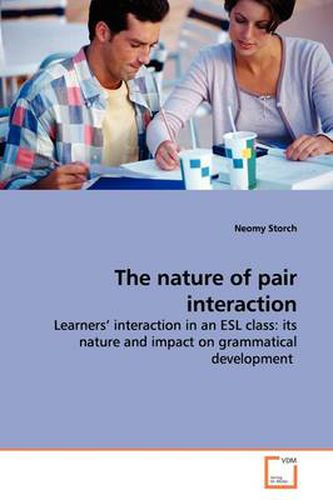Readings Newsletter
Become a Readings Member to make your shopping experience even easier.
Sign in or sign up for free!
You’re not far away from qualifying for FREE standard shipping within Australia
You’ve qualified for FREE standard shipping within Australia
The cart is loading…






This title is printed to order. This book may have been self-published. If so, we cannot guarantee the quality of the content. In the main most books will have gone through the editing process however some may not. We therefore suggest that you be aware of this before ordering this book. If in doubt check either the author or publisher’s details as we are unable to accept any returns unless they are faulty. Please contact us if you have any questions.
Pair work is frequently used in second language classes, yet there has been little research on the type of relations learners form when working in pairs. This study investigated the nature of pair interaction in an adult ESL class. The sources of data used were: audio recordings of pairs working on different tasks over the semester, a survey and interviews with the students, and the tasks completed. The study found four distinct patterns of pair interaction: collaborative, dominant/dominant, dominant/passive and expert/novice. These patterns were distinguishable in terms of the level of contribution to the task and how learners engaged with each other’s contributions. The study found that the patterns remained fairly stable across the semester and regardless of task type. Interview with the learners suggested that the formation of these different patterns may be explained in terms of the learners’ goals and whether members of the pair shared goals. The study also found that learners who collaborated or worked in an expert/novice pattern showed more evidence of language development than learners who formed dominant/dominant or dominant/passive patterns.
$9.00 standard shipping within Australia
FREE standard shipping within Australia for orders over $100.00
Express & International shipping calculated at checkout
This title is printed to order. This book may have been self-published. If so, we cannot guarantee the quality of the content. In the main most books will have gone through the editing process however some may not. We therefore suggest that you be aware of this before ordering this book. If in doubt check either the author or publisher’s details as we are unable to accept any returns unless they are faulty. Please contact us if you have any questions.
Pair work is frequently used in second language classes, yet there has been little research on the type of relations learners form when working in pairs. This study investigated the nature of pair interaction in an adult ESL class. The sources of data used were: audio recordings of pairs working on different tasks over the semester, a survey and interviews with the students, and the tasks completed. The study found four distinct patterns of pair interaction: collaborative, dominant/dominant, dominant/passive and expert/novice. These patterns were distinguishable in terms of the level of contribution to the task and how learners engaged with each other’s contributions. The study found that the patterns remained fairly stable across the semester and regardless of task type. Interview with the learners suggested that the formation of these different patterns may be explained in terms of the learners’ goals and whether members of the pair shared goals. The study also found that learners who collaborated or worked in an expert/novice pattern showed more evidence of language development than learners who formed dominant/dominant or dominant/passive patterns.